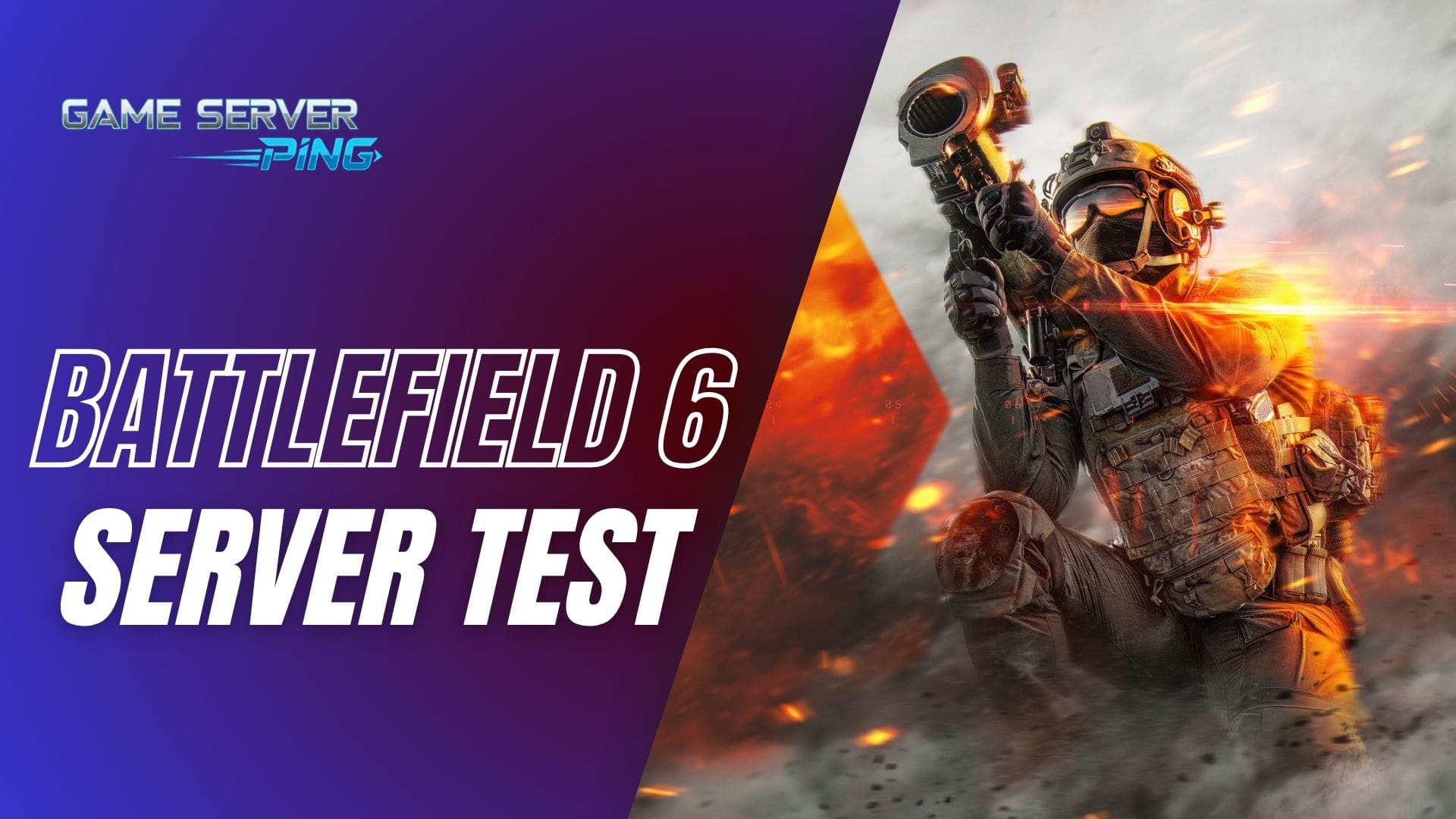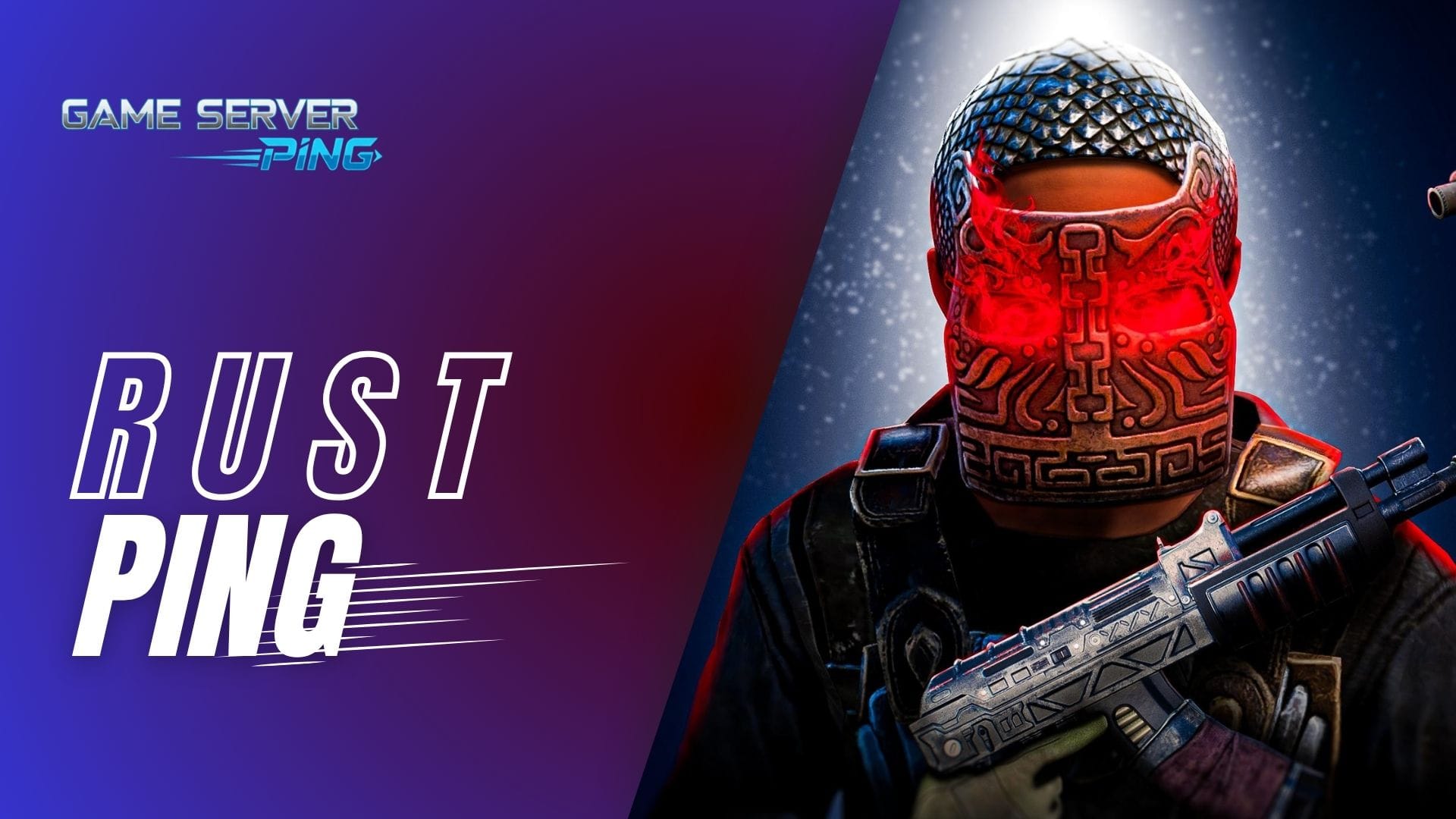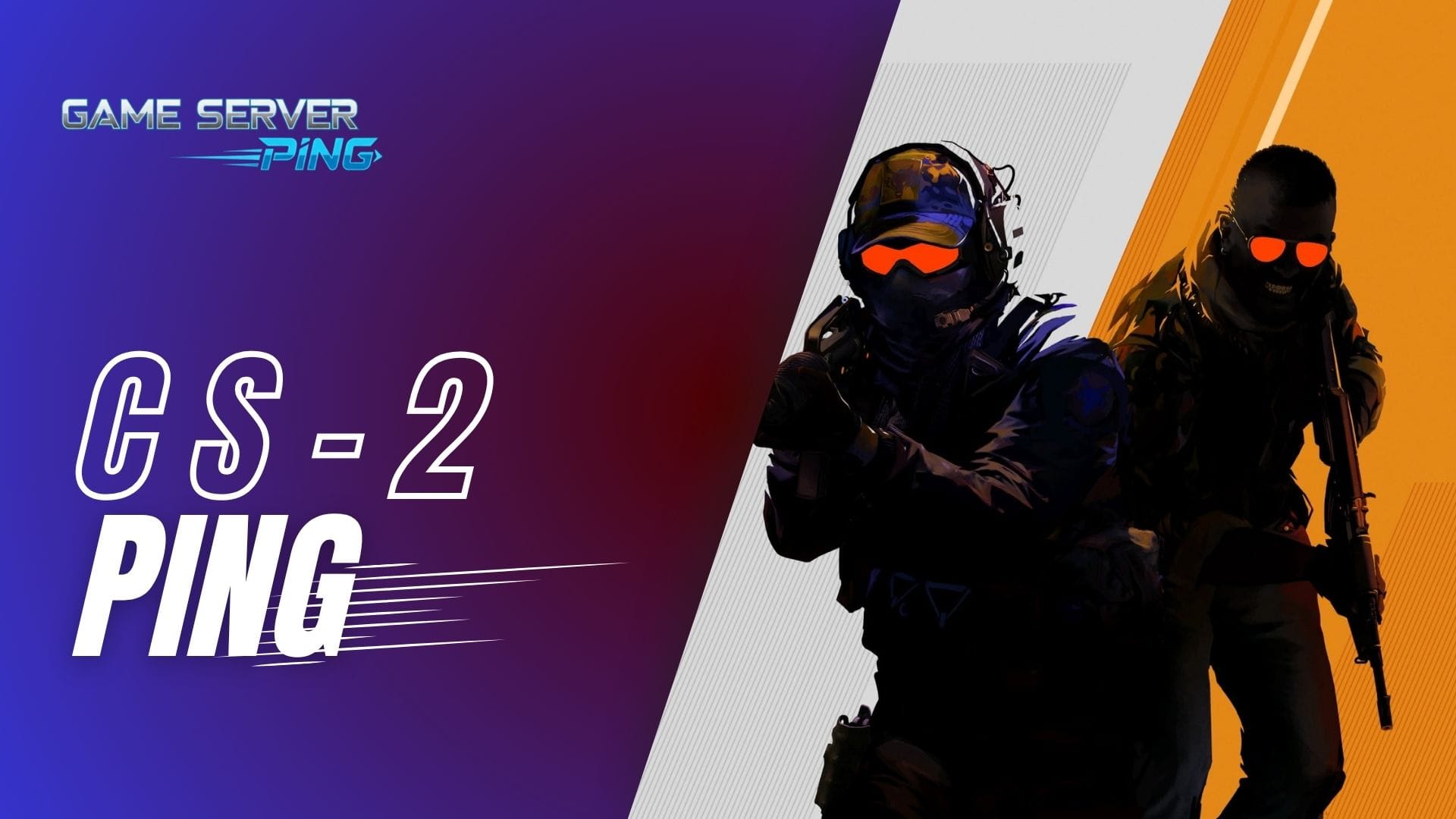Now Reading: Battlefield 6 Server Status Live – Check 20+ Regions
- 01
Battlefield 6 Server Status Live – Check 20+ Regions

Battlefield 6 Server Status Live – Check 20+ Regions
Is Battlefield 6 Down?
When you’re ready to drop into your next Battlefield 6 match, the last thing you want is to discover server issues preventing you from playing. Our Battlefield 6 Server Status Checker provides instant visibility into server availability across all major gaming regions worldwide, helping you determine whether connectivity problems stem from your end or the game infrastructure itself.
Unlike traditional ping testing tools that measure your connection quality, this server status monitor specifically checks whether Battlefield 6’s backend infrastructure is operational and accepting connections. This distinction is crucial for troubleshooting: if servers show as offline, no amount of network optimization on your end will resolve the issue.
Understanding BF6 Server Status vs Ping Testing
Many players confuse server status monitoring with latency testing, but these serve fundamentally different diagnostic purposes. Server status checking determines whether game servers are online, operational, and accepting player connections. When servers go down for maintenance, experience outages, or face technical difficulties, this tool immediately identifies the problem.
In contrast, ping testing—which we cover extensively in our Battlefield 6 ping test guide—measures the quality of your connection to functioning servers. You might have excellent internet speed (verify with our internet speed test), but if BF6 servers are experiencing downtime, you won’t be able to connect regardless of your network performance.
Think of it this way: server status tells you if the destination exists and is accepting visitors, while ping testing measures how quickly you can reach that destination once it’s confirmed operational.
Battlefield 6 Server Status Checker Live
Battlefield 6 Live Server Status
Check your Battlefield 6 server status online instantly with this free live status checker tool for PC, Xbox, and PlayStation players. Monitor your real-time server latency across major regions like North America, Europe, Asia, South America, the Middle East, and Oceania to enjoy lag-free gameplay, stable connections, and optimized performance in every match.
 NA East (Virginia)Checking...
NA East (Virginia)Checking... NA East (Ohio)Checking...
NA East (Ohio)Checking... NA West (California)Checking...
NA West (California)Checking... NA West (Oregon)Checking...
NA West (Oregon)Checking... EU West (Dublin)Checking...
EU West (Dublin)Checking... EU West (London)Checking...
EU West (London)Checking... EU West (Paris)Checking...
EU West (Paris)Checking... EU Central (Frankfurt)Checking...
EU Central (Frankfurt)Checking... EU North (Stockholm)Checking...
EU North (Stockholm)Checking... Africa (Cape Town)Checking...
Africa (Cape Town)Checking... Middle East (Bahrain)Checking...
Middle East (Bahrain)Checking... Middle East (UAE)Checking...
Middle East (UAE)Checking... India (Mumbai)Checking...
India (Mumbai)Checking... Asia (Tokyo)Checking...
Asia (Tokyo)Checking... Asia (Seoul)Checking...
Asia (Seoul)Checking... Asia (Osaka)Checking...
Asia (Osaka)Checking... SEA (Singapore)Checking...
SEA (Singapore)Checking... Oceania (Sydney)Checking...
Oceania (Sydney)Checking... SEA (Jakarta)Checking...
SEA (Jakarta)Checking... South America (São Paulo)Checking...
South America (São Paulo)Checking... Canada (Montreal)Checking...
Canada (Montreal)Checking...
BF6 Server List: Global Coverage Across All Major Regions
The Battlefield 6 Server Status Checker monitors connectivity across 21 strategic server locations spanning six continents, providing comprehensive coverage for the global BF6 player base:
North America Servers
- NA East (Virginia) – Primary East Coast infrastructure
- NA East (Ohio) – Midwest connectivity hub
- NA West (California) – West Coast gaming center
- NA West (Oregon) – Pacific Northwest region
- Canada (Montreal) – Canadian player gateway
European Servers
- EU West (Dublin) – Irish infrastructure
- EU West (London) – UK gaming hub
- EU West (Paris) – French server cluster
- EU Central (Frankfurt) – German central node
- EU North (Stockholm) – Scandinavian region
Asia-Pacific Servers
- Asia (Tokyo) – Japanese primary server
- Asia (Seoul) – Korean gaming infrastructure
- Asia (Osaka) – Secondary Japanese node
- SEA (Singapore) – Southeast Asia hub
- SEA (Jakarta) – Indonesian server
- Oceania (Sydney) – Australian/New Zealand region
- India (Mumbai) – South Asian gateway
Middle East & Africa Servers
- Middle East (Bahrain) – Gulf region connectivity
- Middle East (UAE) – Emirates infrastructure
- Africa (Cape Town) – African continent server
South America Servers
- South America (São Paulo) – Brazilian gaming hub
This extensive server distribution ensures that wherever you’re gaming from—whether you’re in North America, Europe, Asia, or beyond—you can monitor the specific infrastructure that affects your Battlefield 6 experience.
How the Battlefield 6 Server Status Tool Works
Our real-time monitoring system operates through continuous health checks against major gaming infrastructure nodes that support Battlefield 6’s online services. Here’s how the process works:
Instant Server Availability Checks
When you click “Check Battlefield 6 Server Status,” the tool immediately initiates connection attempts to all monitored server locations. Each server receives a lightweight connection request designed to verify operational status without impacting game performance.
Response Time Measurement
Beyond simple online/offline status, the tool measures response times from each server location. You’ll see actual millisecond values that indicate not just availability, but also current server responsiveness. These measurements update every few seconds, providing live feedback on infrastructure performance.
Automated Sorting for Best Performance
The server list automatically reorganizes based on response times, placing the fastest-responding (and therefore likely best-performing) servers at the top. This intelligent sorting helps you identify which regional servers currently offer optimal connectivity for your location.
Multi-Metric Analysis
The tool tracks multiple connection attempts to each server, calculating:
- Average response time – Overall server responsiveness
- Jitter measurements – Connection stability indicator
- Consistency patterns – Reliability over time
This comprehensive approach goes beyond simple uptime monitoring to give you actionable intelligence about server performance quality.
What Results You Can Expect from the BF6 Server Status Checker
Online/Offline Status Indicators
Each server location displays a clear Online or Offline status marker. When servers are operational and accepting connections, you’ll see green “Online” indicators alongside actual response times. Offline servers display red “Offline” status with “unreachable” notation, immediately alerting you to infrastructure issues.
Stability Metrics
Beyond single-point measurements, the tool displays average response times and jitter values calculated from multiple checks. These stability metrics reveal whether a server maintains consistent performance or experiences fluctuations that could cause gameplay disruptions.
For instance, a server showing 50ms average with 5ms jitter indicates stable, reliable connectivity. However, a server with 100ms average but 45ms jitter suggests inconsistent performance that could manifest as rubber-banding or lag spikes during matches.
Best Server Highlighting
The tool automatically identifies and highlights your optimal server choice with a distinctive visual indicator. This “best server” designation considers both raw response time and stability metrics, guiding you toward the infrastructure most likely to deliver smooth gameplay.
Why Battlefield 6 Server Status Monitoring Matters
Understanding server status before launching BF6 saves frustration and wasted time. If multiple regions show offline status or extremely high response times, you know to wait for infrastructure recovery rather than troubleshooting your local network setup. Similarly, identifying the best-performing regional servers helps you make informed decisions about server selection within the game.
Server status visibility becomes especially valuable during:
- Peak gaming hours when server loads increase
- Update deployments that may cause temporary outages
- Infrastructure maintenance windows announced by developers
- Unexpected outage events affecting specific regions
- Coordinated gaming sessions where you need to choose optimal mutual servers
Server Status Checks Across Other Popular Games
If you play multiple online titles, maintaining awareness of server health across your gaming library proves valuable. Our platform offers similar real-time monitoring for other popular competitive games:
- Valorant Server Status – Monitor Riot’s tactical shooter infrastructure
- Fortnite Server Status – Check Epic Games server availability
- Minecraft Server Status – Verify Minecraft online services
Understanding the relationship between network metrics is also valuable—our guide on ping vs latency in Valorant explains these concepts in detail, though the principles apply across all online games.
Troubleshooting with Server Status Information
When you encounter connectivity issues in Battlefield 6, checking server status should be your first diagnostic step. If the tool shows all servers online with normal response times, the problem likely originates from your local network or ISP. In such cases, you can:
- Run an internet speed test to verify your connection bandwidth
- Check your ISP’s network status for reported issues
- Use the Battlefield 6 ping test to measure your specific connection quality
However, if the server status checker reveals widespread offline servers or abnormally high response times across multiple regions, you can rule out local issues and simply wait for infrastructure recovery.
Maximizing Your BF6 Gaming Experience
Consistent server status monitoring helps you develop patterns about optimal gaming times and preferred server regions. You might discover that certain servers consistently perform better for your geographic location, or that specific times of day correlate with degraded performance due to player load.
This intelligence allows you to:
- Plan gaming sessions around infrastructure stability
- Choose optimal server regions within game settings
- Avoid frustrated teammates by ensuring servers are operational before squad invites
- Distinguish between infrastructure and connection issues for faster troubleshooting
The Battlefield 6 Server Status Checker provides this critical infrastructure visibility in seconds, ensuring you spend more time in-game and less time troubleshooting connectivity problems.
How to Optimize Your Battlefield 6 Gaming Experience
Choose the Right Server Region
Server selection significantly impacts your gameplay quality. While geographic proximity generally provides the best connectivity, exceptions exist based on infrastructure quality, current server load, and routing paths your ISP uses. Always check server status before each gaming session rather than assuming your usual server remains optimal.
Consider testing multiple nearby servers during non-peak hours to establish performance baselines. Players situated between major regions—like those in the central United States who can access both East and West Coast servers—should regularly compare both options. The “best” server can shift based on time of day, day of week, and current player populations.
For squad-based gameplay, coordinate server selection with your teammates. If you’re playing with friends across different continents, identify the middle-ground server that offers acceptable performance for everyone rather than optimizing solely for one player’s connection. The server status tool’s comprehensive regional coverage helps identify these compromise solutions.
Schedule Gaming Sessions Strategically
Server performance varies significantly based on time of day and day of week. Peak gaming hours—typically evenings and weekends in each region—see increased player loads that can impact server responsiveness. If you notice consistently degraded performance during certain hours, consider shifting your gaming schedule slightly earlier or later to avoid congestion.
Monitor server status patterns over several weeks to identify your optimal gaming windows. You might discover that playing two hours earlier provides dramatically better connectivity, or that certain days see less server congestion than others. This knowledge helps you plan gaming sessions when infrastructure performs best.
Major game updates and content releases generate exceptional player loads as everyone rushes to experience new features. Expect server instability during the first few hours after major patches, and consider waiting until infrastructure stabilizes before diving into new content. The server status checker helps you monitor when post-update congestion subsides.
Optimize Your Local Network Setup
While server status determines infrastructure availability, your local network configuration affects how effectively you connect to those servers. Position your gaming device as close to your router as possible, or better yet, use wired Ethernet connections instead of WiFi. Wireless connections introduce variable latency that compounds any server-side delays.
Close bandwidth-intensive applications and background processes before gaming sessions. Streaming services, file downloads, cloud backups, and system updates compete for your available bandwidth. Ensure Battlefield 6 receives priority access to your internet connection by pausing non-essential network activities.
If multiple household members share your internet connection, coordinate bandwidth usage during your gaming sessions. Family members streaming 4K video while you attempt competitive matches creates network congestion that server status tools won’t reveal since the problem originates locally rather than at the infrastructure level.
Configure In-Game Settings Appropriately
Battlefield 6 offers various network-related settings that impact connectivity quality. Ensure your in-game server browser filters match the regions showing optimal performance in the status checker. There’s no benefit to allowing connection attempts to distant servers showing poor responsiveness.
Monitor your in-game network statistics during matches to verify real-world performance matches pre-game server status checks. Occasional discrepancies occur when server load increases after you connect, or when mid-session infrastructure issues develop. If in-game performance deteriorates significantly from status checker predictions, consider switching servers between matches.
Some network settings affect how your client handles poor connectivity. Features like network smoothing or lag compensation can mask minor connection issues but introduce artificial delays in responsive conditions. Experiment with these settings while monitoring server status to find configurations that work best with your typical connectivity quality.
Keep Software and Drivers Updated
Outdated network drivers or operating system network stacks can introduce connection instability regardless of server status. Regularly update your network adapter drivers, ensuring you have the latest versions optimized for gaming traffic. Similarly, keep your operating system current with the latest patches that often include network performance improvements.
Game client updates frequently include connection handling optimizations that improve how Battlefield 6 communicates with servers. Never postpone game updates, as outdated clients may experience connectivity issues that current clients handle gracefully. The server status checker reports infrastructure health, but your client software determines how effectively you utilize that infrastructure.
Router firmware updates occasionally resolve obscure network issues affecting gaming traffic. If you experience persistent connection problems despite server status showing normal operations, check whether your router manufacturer has released firmware updates addressing stability or performance issues.
Use Quality of Service (QoS) Settings
Modern routers offer Quality of Service features that prioritize gaming traffic over less time-sensitive data. Configure QoS rules to give Battlefield 6 network traffic highest priority, ensuring game packets receive preferential handling over background downloads or streaming video.
Effective QoS configuration prevents situations where another household member starting a large download suddenly impacts your game connectivity. The server status checker might show perfect infrastructure performance, but without QoS protection, local bandwidth competition creates artificial lag. Combining server status monitoring with proper QoS setup ensures both infrastructure and local network support optimal gaming performance.
Monitor Your ISP Connection Quality
Your internet service provider’s network health directly impacts your ability to reach game servers regardless of their operational status. If you consistently see good server status but poor in-game performance, investigate whether your ISP experiences routing issues, packet loss, or bandwidth throttling affecting gaming traffic.
Some ISPs implement traffic shaping that deprioritizes gaming protocols during network congestion. Others route gaming traffic through suboptimal paths that introduce unnecessary latency despite geographic proximity to servers. Understanding whether connection issues originate from server infrastructure, your local network, or ISP routing helps target solutions effectively.
Consider running regular connection quality tests to establish your network’s baseline performance. Comparing these results with server status data reveals whether problems stem from infrastructure availability or connectivity quality. This diagnostic approach separates “servers are down” situations from “my connection can’t reach functioning servers” scenarios.
Server Status Monitoring Across Multiple Games
If you play multiple competitive online titles, understanding server health across your gaming library provides valuable context for connectivity troubleshooting. Infrastructure issues occasionally affect multiple games simultaneously when they share backend services, while other times problems remain isolated to specific titles.
Checking status across different games helps identify whether you’re experiencing game-specific infrastructure issues or broader internet backbone problems affecting multiple services. When comparing results, you might notice patterns like consistently better connectivity to certain publishers’ infrastructure or regional performance variations that affect all games similarly.
This cross-game perspective proves especially valuable for players who maintain competitive rankings in multiple titles. Understanding which games currently offer optimal server performance helps you prioritize your gaming time effectively. If your primary competitive game shows degraded server status while alternatives perform normally, switching titles temporarily makes sense rather than fighting through suboptimal conditions.
Final Thoughts on BF6 Server Monitoring
Whether you’re a competitive player seeking every performance advantage or a casual gamer wanting hassle-free sessions, understanding Battlefield 6’s server infrastructure status provides valuable insight. Our real-time monitoring tool delivers this information instantly across all major global regions, with automatic updates ensuring you always have current data.
Check the server status before every gaming session, identify your optimal regional infrastructure, and enjoy smoother, more reliable Battlefield 6 gameplay knowing exactly which servers offer the best performance at any given moment.
Can I play on a server in a different region from where I live?
Yes, you can connect to any Battlefield 6 server regardless of your physical location, though performance quality depends on the distance between you and the chosen server. The server status checker shows all global regions, allowing you to see response times from your location to servers worldwide.
Do server status results differ between PC, Xbox, and PlayStation?
No, Battlefield 6 server infrastructure serves all gaming platforms simultaneously rather than maintaining separate server clusters for each platform. The server status checker reports the same infrastructure health whether you play on PC, Xbox Series X|S, Xbox One, PlayStation 5.
Why do some servers show as online but I still can’t connect in-game?
Server status checking verifies basic infrastructure responsiveness, but successful in-game connections require additional authentication steps, account verification, and game client validation. A server might respond to health checks while simultaneously experiencing issues with authentication services, matchmaking systems, or player session management.
How often should I check server status before playing?
Check server status before each gaming session, especially if you experienced connection issues previously or play during peak hours when server performance varies. The dynamic nature of online gaming infrastructure means conditions change throughout the day as player populations fluctuate, maintenance occurs, or technical issues develop and resolve.
What should I do if my preferred server region shows poor status for extended periods?
If your nearest server region consistently displays poor performance or offline status for several hours or days, first verify the issue affects all servers in that region rather than single nodes by checking the complete regional server list. Contact the game’s official support channels or community forums to determine whether developers acknowledge the issue and are implementing fixes.












Kevin
I was reading through some of your content on this internet site and I believe this website is rattling informative! Continue posting.